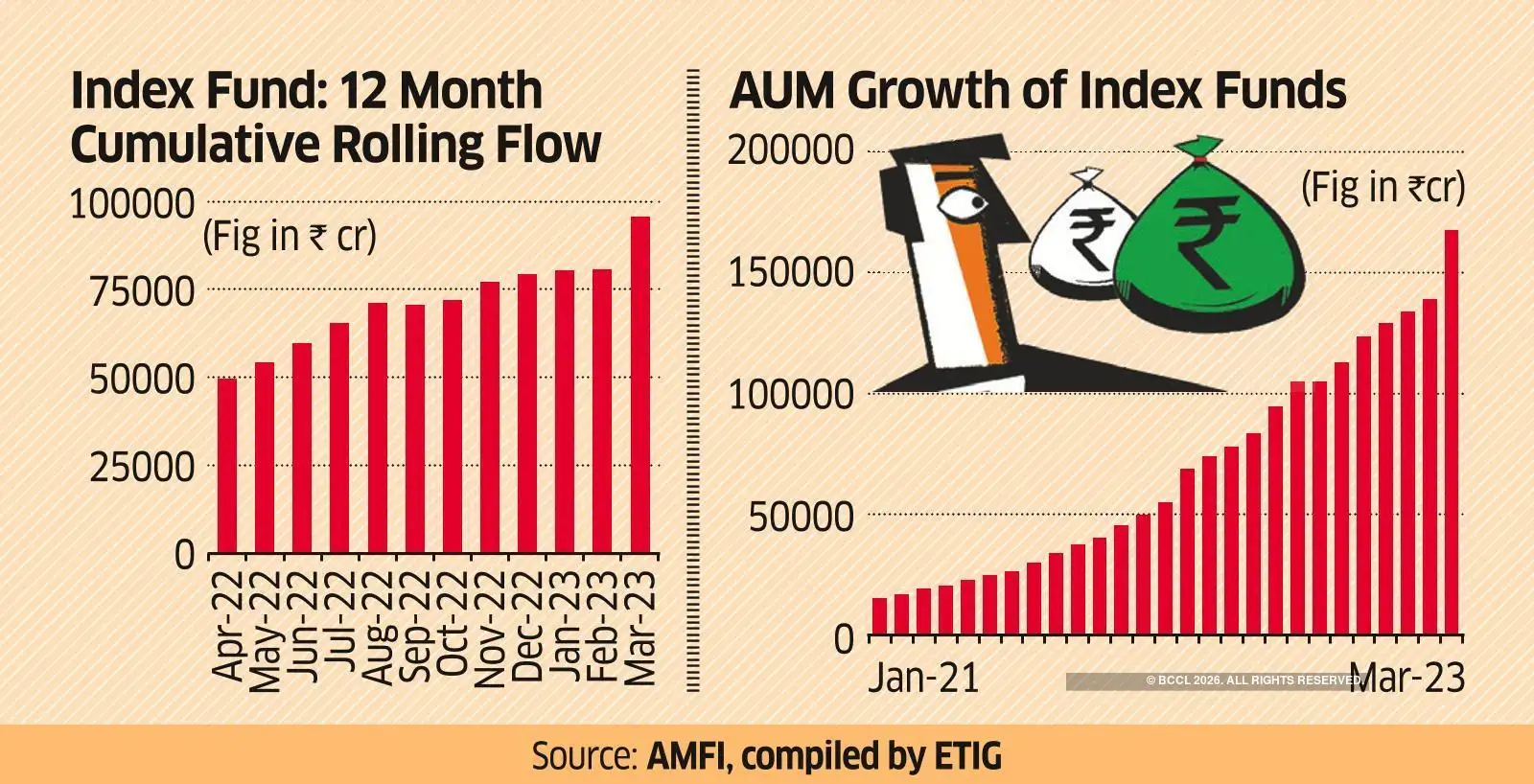Index fund AUM stood at ₹1.67 lakh crore as of March 2023 from ₹68,675 crore a year ago, showed data from the Association of Mutual Funds in India (Amfi).
At 143%, the asset growth of index funds was the highest among all MF categories in percentage terms. The AUM of the category is now higher than small-cap, ELSS and sectoral equity funds, and only 8% lower than the mid-cap category.
Index funds are the only category which recorded month-on-month asset expansion during FY23 among all MF categories. The first eleven months of the financial year recorded consistent inflows with the average at ₹6,222 crore and it was further buttressed by a massive inflow of ₹27,288 crore in March, taking full-year inflow to ₹95,670 crore – the highest among all MF segments with equity exposure.
Index funds have witnessed a sudden rush of inflow in March as investors flocked to debt index funds to take advantage of indexation benefits on capital gains, which would cease from April.
As a result, the new folios in index funds rose to 270,000 in March – the highest since Amfi started putting out data. The 12-month rolling cumulative fund inflow in index funds has reached a record level of 65% of the total inflows in equity funds in March compared with the last one-year average of 38%.
The robust expansion in index fund AUM has taken the share of passive fund AUM (index funds and ETFs combined) to 42% of total equity AUM at the end of March. This ratio expanded by 12% in the last two years. Interestingly, the number of schemes in the index fund category rose to 177 as of March from 93 a year ago.There are a couple of reasons why index funds are grabbing a larger share of investor money. One, it minimises the risk of value erosion from a concentrated bet on a stock or a sector by an active fund manager in a volatile market. Two, they carry a lower expense ratio as compared to large-cap funds. Lastly, investors can take exposure in passive fund style without opening a demat account.








